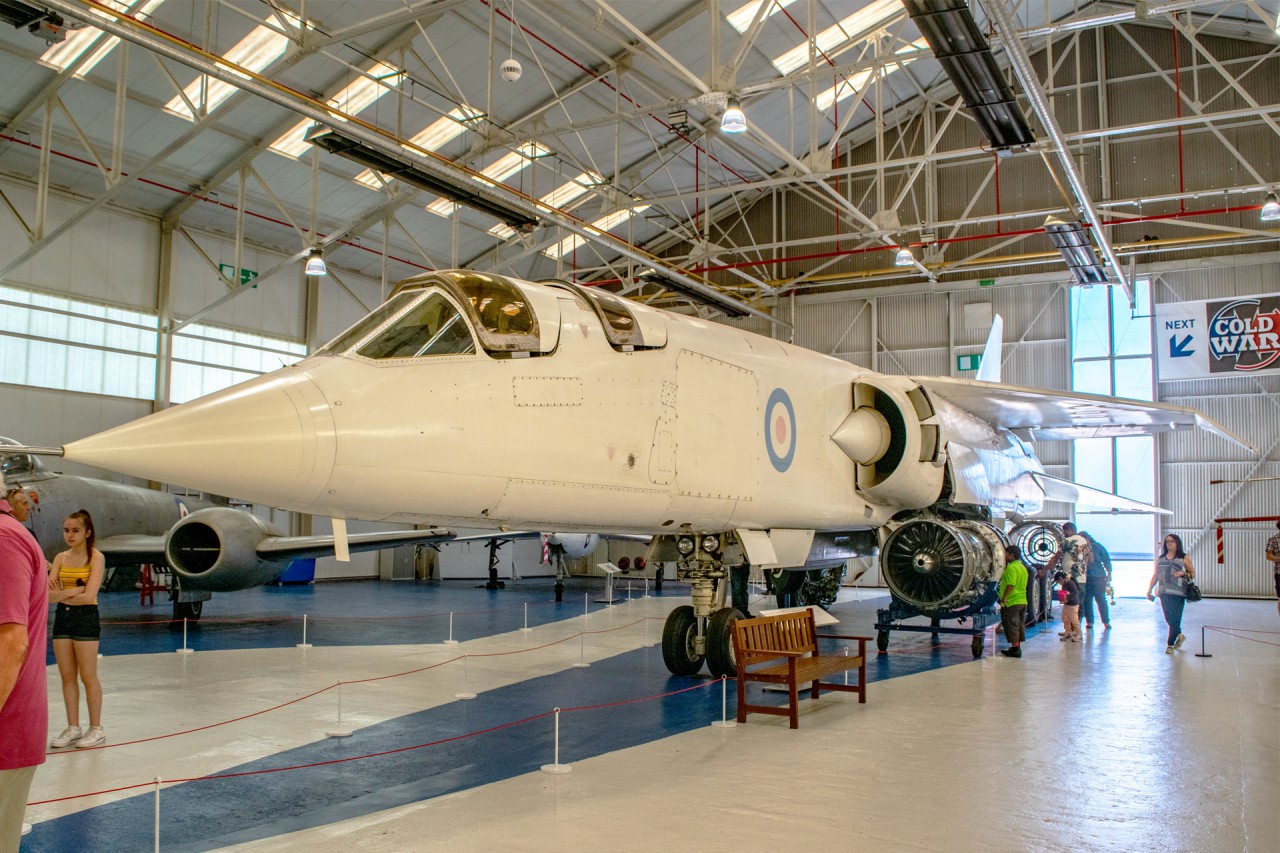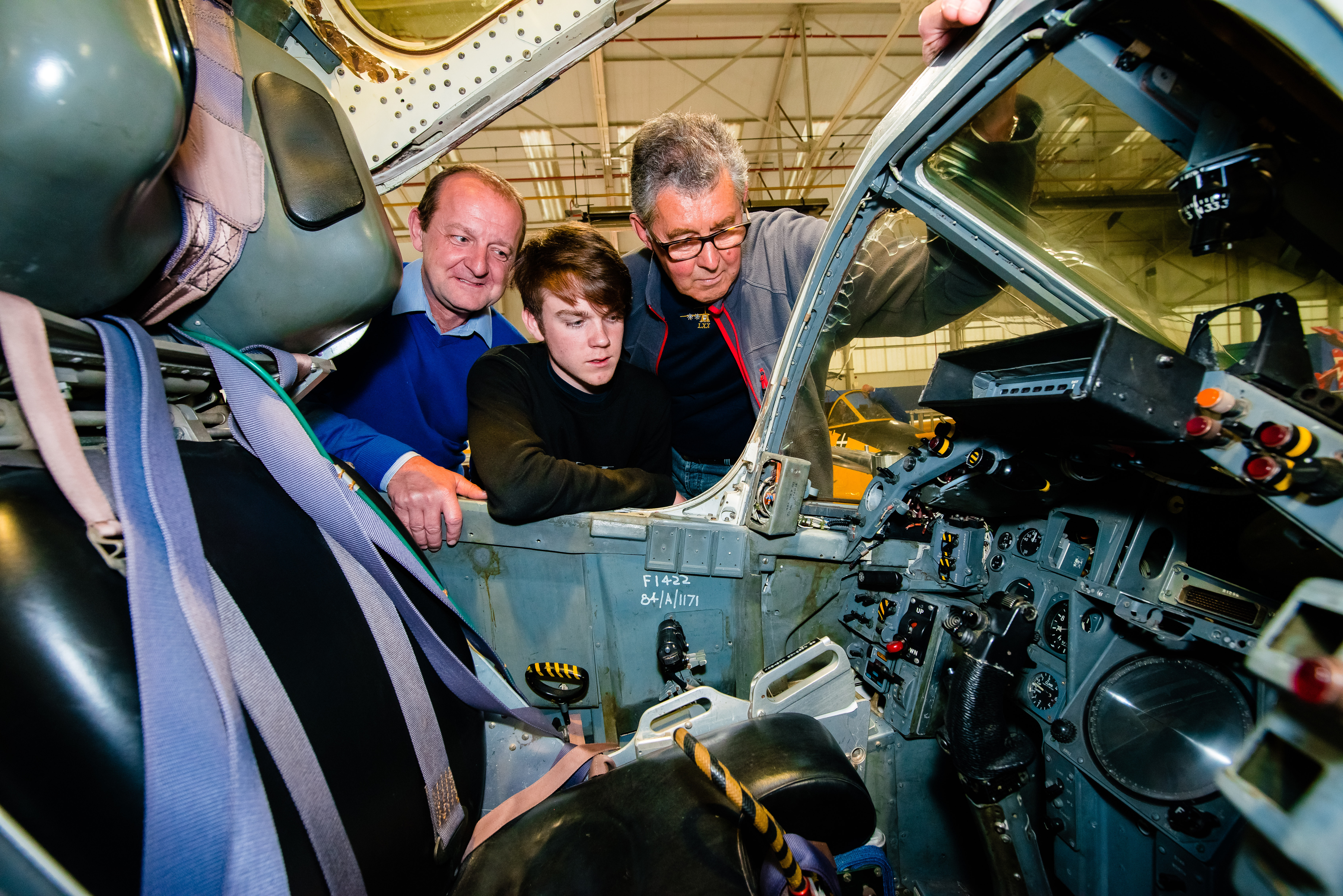British Aircraft Corporation Tsr-2 - In-store translation: Tactical Bomber and Reconnaissance, Mach 2) is a project developed by the British Aircraft Corporation (BAC) for strategic bombers and reconnaissance aircraft that will join the Air Force, but half I have to Canceled. - 1960.
The TSR-2 is designed to penetrate low-altitude and high-speed battles later to strike the target with nuclear or conventional weapons. The TSR-2 is also designed for high-speed, high-speed shooting. These design requirements made the TSR-2 a high-tech aircraft for the time being considered the most advanced aircraft to fulfill this role.
British Aircraft Corporation Tsr-2
Although only one prototype was flown, flight tests showed that the aircraft was ready to meet its strict technical specifications.
Get Up Close And Personal With Raf Cosford Jets
The TSR-2 suffered a political decision that led to a controversial decision to abandon the program in 1965, as well as disputes between various branches of the British Armed Forces over the country's future defense needs. .
After the election of the new government led by Harold Wilson TSR-2 was canceled due to increased development costs in favor of acquiring General Dynamics F-111K Aardvark instead of later decision I did. Canceled due to rising prices and turnaround time.
The TSR-2 program will eventually be scrapped by the purchase of additional Blackburn Buccaneer and McDonnell Douglas F-4 Phantom II aircraft.
British Electric Canberra of the Royal Air Force in 1958. Canberra and V bombers formed the backbone of British bombers during the 1950s and 1960s.
Rear View Of The British Aircraft Corporation Tsr 2 Stock Photo
Royal Air Force Avro Vulcan in 1954. The Vulcan, along with Handley-Page Victor and Vickers Valiant, were part of the British V-bomber.
Prior to the development of the TSR-2, the Royal Air Force used the British Electric Canberra as its main bomber, capable of flying at high altitudes and at subsonic speeds. Like the De Havilland Mosquito, Canberra has no defensive weapons and relies entirely on its ability to fly at high altitudes to evade anti-aircraft defenses.
However, with the integration of radar-guided surface-to-air missiles into strategic warfare services, it is no longer useful.
Land-to-air missiles are faster than other modern aircraft. This includes Canberra and other high-altitude bombers vulnerable to weapons, such as the British-operated V-bomber and the US B-52 Stratofortrs. The first aircraft to be attacked by the Soviet S-75 Dvina missile (NATO designation: SA-2 Guideline) was the RB-57, an Canberra aerial reconnaissance missile that was shot down in 1959.
Bac Tsr.2 \
The solution to your problem is low flight. Because radar operates on electromagnetic radiation, low-flying aircraft take advantage of the visible radar created by the sky.
In practice, trees, mountains, canyons and other obstacles can further narrow your range, making it harder to catch waves at low altitudes.
Canberra is designed for high-altitude flights, but not for low-level flights, with subsequent flight level changes. It requires a completely different aircraft.
Low-flying surface bombing, known as air blockade missions, led to the design of new aircraft in the late 1950s. These aircraft are characterized by high wing load to reduce the effects of wind. Flying at low altitudes and at high speeds and large fuel loads allows flying with constant level shifts.
Archivo:tsr 2 (engines).jpg
The British government is aware of the changes in the operational scenario. Therefore, the Ministry of Supply (the leader of the Ministry of Defense) began working with the English manufacturer Electric on a project in 1955 to certify the design of a new light bomber to replace Canberra.
The initial study completed the limitation of the aircraft, which will have a radius of 2,000 nautical miles (3,700 km) and a Mach 1.5 speed in high altitude flight, reduced to 600 miles in low flight. The aircraft requires two crew members, one as an exploration and attack operator and the other as a pilot. It can also carry four bombs weighing 1,000 pounds (450 kg).
The first definition was revised to become official in November 1956. The specifications were published as General Operating Requirements 339 (GOR.339), which were submitted to various aircraft manufacturers in March 1957.

The technical details were unusually exciting for the current technology at the time. This requires a supersonic aircraft capable of flying at Mach 2 at high altitude or Mach 1.2 at low altitude. It must also operate in all types of climates, capable of carrying nuclear warheads over long distances and provide short-range landing and launch capabilities, or vertical launch capabilities and landing capabilities.
Bac Tsr 2 / Giclee Print
The final requirement for GOR.339 is a general disruption of the 1950 war plan, which suggests that early nuclear strikes could eliminate most existing air bases and flights. This meant that aircraft would have to fly off unprepared runways, abandoned airports after World War II, or even flat and unobstructed terrain.
For GOR.339, the minimum altitude is specified at an altitude of 1,000 feet (300 meters) with an attack speed of 0.95 kilometers per hour at sea level and a length not exceeding 3,000 feet (900 meters). Runway.
The TSR-2 fits the bill because it is capable of operating 200 feet above the ground at Mach 1.1 speeds.
PGM-17 Thor ballistic missile. The deployment of ballistic missiles on British soil has sparked debate over the need for a TSR-2.
Bac Tsr 2 Addon
While GOR.339 specifications are being studied by various manufacturers, the first political storm that will affect the project has occurred. Secretary of Defense Duncan Sandys said in the 1957 Defense White Paper that the era of manual combat is over and ballistic missiles will be the weapon of the future.
For a decade, this philosophy was obsolete, but in those days, in the midst of the Cold War and in the midst of the "nuclear weapons strategy," missile systems seemed to make sense.
Especially when it is presented to you as a solution that offers cost savings on manned aircraft.

Britain's interest in missiles increased when the United States deployed the PGM-17 Thor missile system on British soil between 1959 and 1963 under the so-called Project Emily.
Bac Tsr 2 Royal Navy By Bagera3005 On Deviantart
This approach has been hotly debated in the British aviation industry and the Ministry of Defense for many years.
A senior official of the Royal Air Force objected to the White Paper's conclusion, noting the importance of mobility, and that the TSR-2 could replace not only Canberra, but potentially the entire fleet. Bombing Force V
This view was shared by British MP Julian Emery, who also reported to the Sunday Telegraph:
"There are a lot of things that rockets can not do. They can not capture the enemy's position, can not move quickly from one scene to another, and they can not switch from one target to another. Only carriers. Cars capable of providing such mobility. "Julian Emery wrote for the Sunday Telegraph in 1965. [26] [27]
British Aircraft Corporation Tsr 2 By Daniel Wales Images On Deviantart
In addition to debating the need for drones, other political decisions complicate the project. In September 1957, the Ministry of Supply informed the president of the airline that the only acceptable offer was issued by a group with more than one carrier.
In the 1950s, the UK had a large number of aircraft manufacturers, while orders were declining, the government was trying to boost cooperation between some companies and promote mergers between them.
Another political issue

Sikorsky aircraft corporation, aircraft finance corporation, cirrus aircraft corporation, univair aircraft corporation, united aircraft corporation, tsr aircraft, aircraft guaranty corporation, bell aircraft corporation, boeing aircraft corporation, british aircraft corporation, cessna aircraft corporation, british aircraft museum


0 Comments